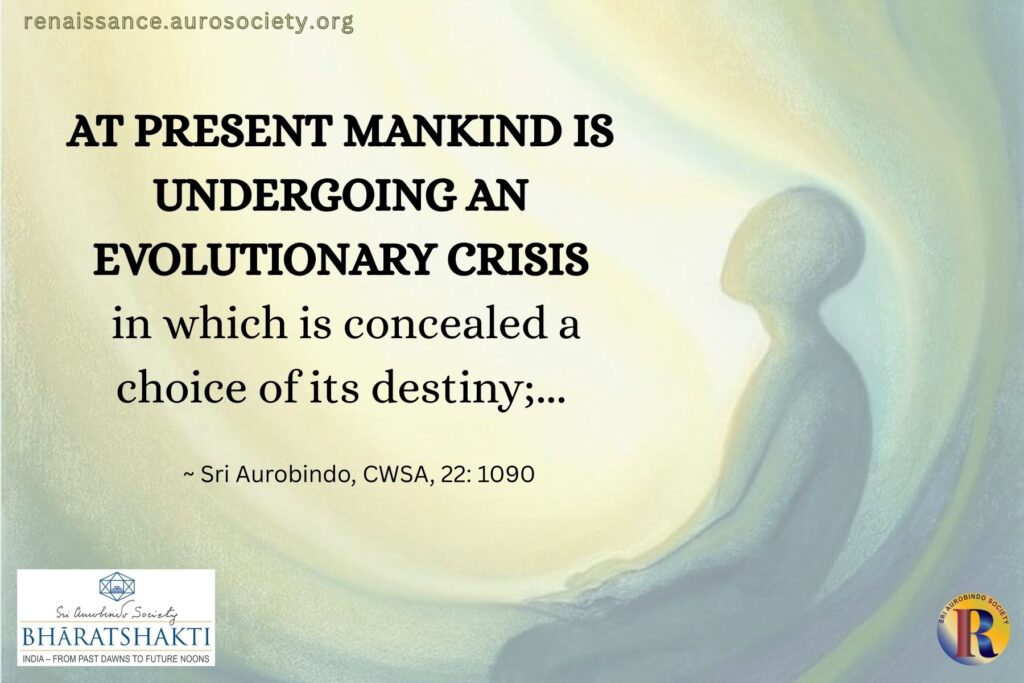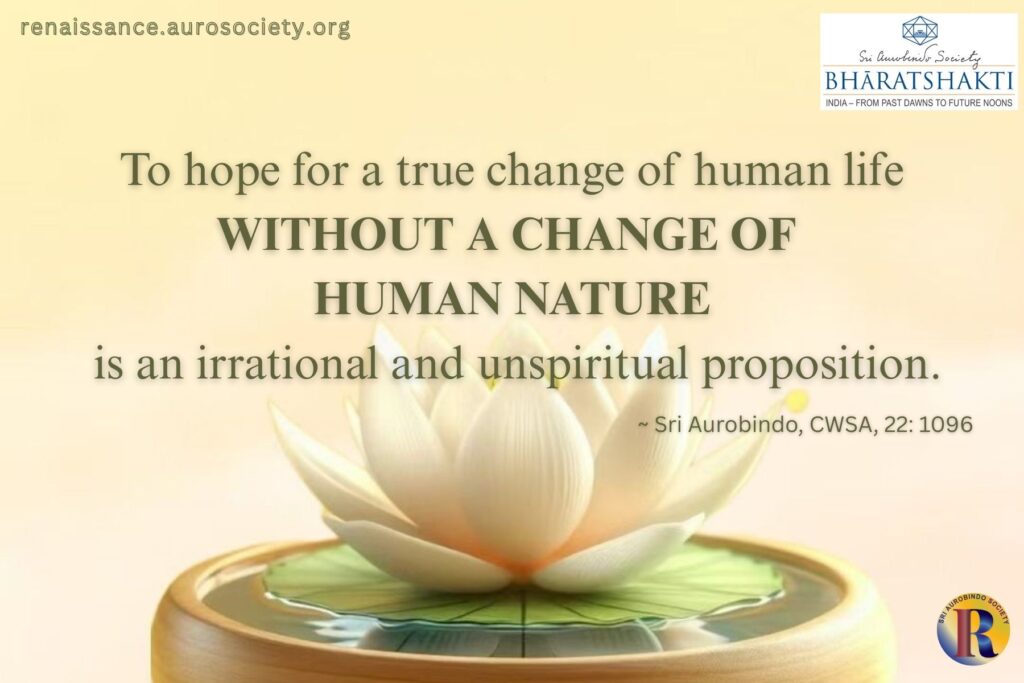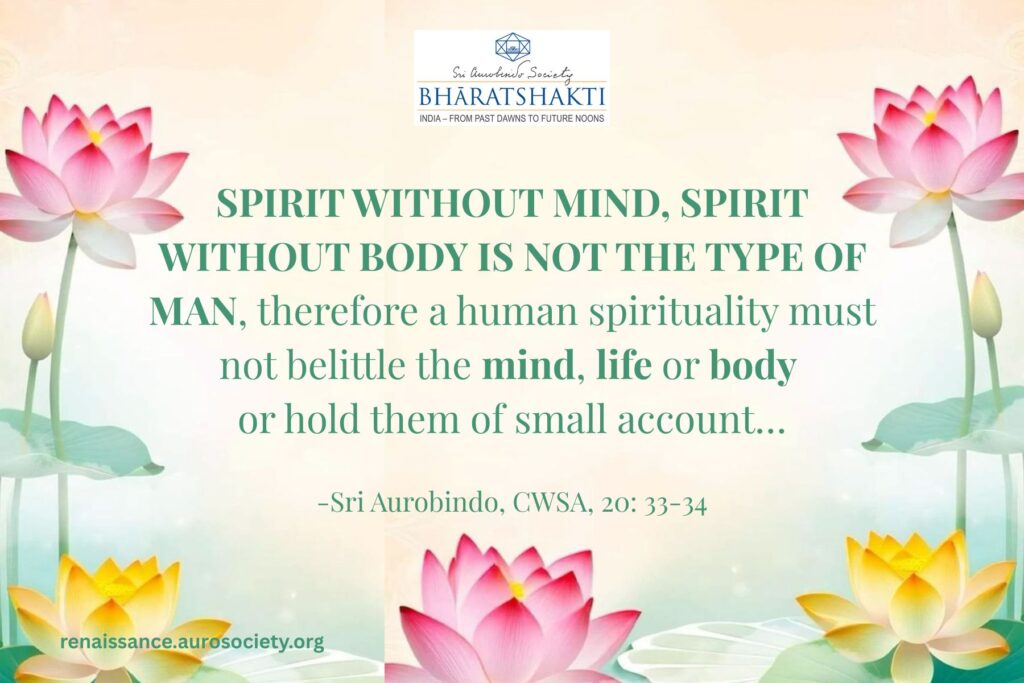Volume VI, Issue 5
Author: Sri Aurobindo
Editor’s Note: Sri Aurobindo, in his volume The Renaissance in India and Other Essays on Indian Culture, devotes a full essay on Indian painting (CWSA, Vol. 20, pp. 298-313). We find there a deeper historical overview of the painting traditions of India, especially focusing on the continuity of the tradition. He speaks of the spirit, inspiration and motive with which the best Indian painters worked. And he further emphasises the deep and intimate connection of Indian painting with the spiritual and religious-philosophic vision that is at the source of all Indian cultural expressions.
For the Guiding Light feature we highlight some selections from that essay in 2 parts.

Historical Overview
…Indian culture was able to arrive at a well developed and an understanding aesthetic use of colour and line from very early times and, allowing for the successive fluctuations, periods of decline and fresh outbursts of originality and vigour, which the collective human mind undergoes in all countries, used this form of self-expression very persistently through the long centuries of its growth and greatness.
And especially it is apparent now that there was a persistent tradition, a fundamental spirit and turn of the aesthetic sense native to the mind of India which links even the latest Rajput art to the earliest surviving work still preserved at its highest summit of achievement in the rock-cut retreats of Ajanta.
The materials of the art of painting are unfortunately more perishable than those of any other of the greater means of creative aesthetic self-expression and of the ancient masterpieces only a little survives, but that little still indicates the immensity of the amount of work of which it is the fading remnant. It is said that of the twenty-nine caves at Ajanta almost all once bore signs of decoration by frescoes; only so long ago as forty years sixteen still contained something of the original paintings, but now six alone still bear their witness to the greatness of this ancient art, though rapidly perishing and deprived of something of the original warmth and beauty and glory of colour.
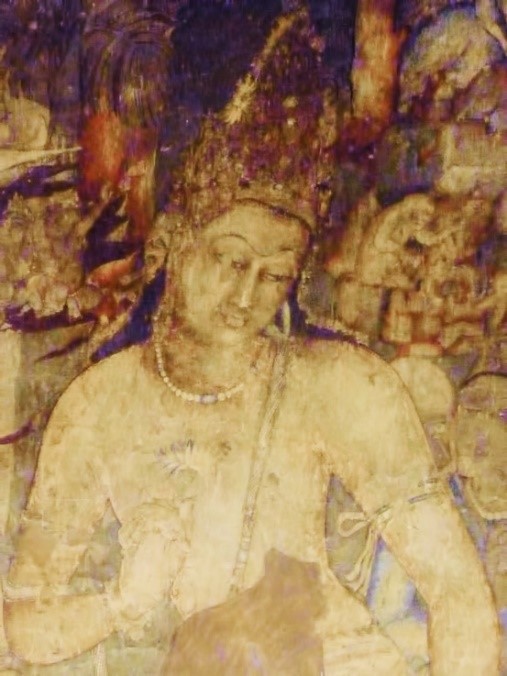
* * *
The rest of all that vivid contemporaneous creation which must at one time have covered the whole country in the temples and viharas and the houses of the cultured and the courts and pleasure-houses of nobles and kings, has perished, and we have only, more or less similar to the work at Ajanta, some crumbling fragments of rich and profuse decoration in the caves of Bagh and a few paintings of female figures in two rock-cut chambers at Sigiriya.1
These remnants represent the work of some six or seven centuries, but they leave gaps, and nothing now remains of any paintings earlier than the first century of the Christian era, except some frescoes, spoilt by unskilful restoration, from the first century before it, while after the seventh there is a blank which might at first sight argue a total decline of the art, a cessation and disappearance.
But there are fortunately evidences which carry back the tradition of the art at one end many centuries earlier and other remains more recently discovered and of another kind outside India and in the Himalayan countries carry it forward at the other end as late as the twelfth century and help us to link it on to the later schools of Rajput painting. The history of the self-expression of the Indian mind in painting covers a period of as much as two millenniums of more or less intense artistic creation and stands on a par in this respect with the architecture and sculpture.
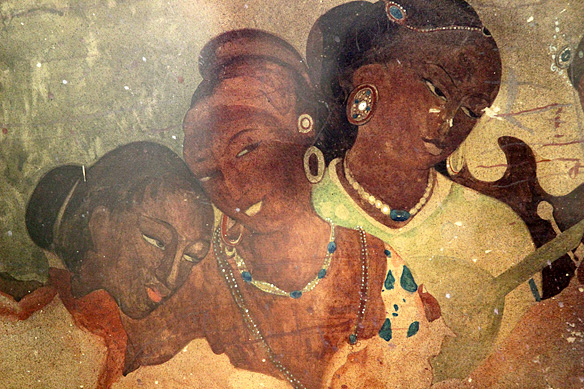
Pre-Buddhistic Origin of Painting in India
The paintings that remain to us from ancient times are the work of Buddhist painters, but the art itself in India was of pre-Buddhistic origin. The Tibetan historian ascribes a remote antiquity to all the crafts, prior to the Buddha, and this is a conclusion increasingly pointed to by a constant accumulation of evidence.
Already in the third century before the Christian era we find the theory of the art well founded from previous times, the six essential elements, ṣaḍaṅga, recognised and enumerated, like the more or less corresponding six Chinese canons which are first mentioned nearly a thousand years later, and in a very ancient work on the art pointing back to pre-Buddhistic times a number of careful and very well-defined rules and traditions are laid down which were developed into an elaborate science of technique and traditional rule in the later Shilpasutras.
The frequent references in the ancient literature also are of a character which would have been impossible without a widespread practice and appreciation of the art by both men and women of the cultured classes, and these allusions and incidents evidencing a moved delight in the painted form and beauty of colour and the appeal both to the decorative sense and to the aesthetic emotion occur not only in the later poetry of Kalidasa, Bhavabhuti and other classical dramatists, but in the early popular drama of Bhasa and earlier still in the epics and in the sacred books of the Buddhists.
Indian Painting – Religious or Secular in Origin?
The absence of any actual creations of this earlier art makes it indeed impossible to say with absolute certainty what was its fundamental character and intimate source of inspiration or whether it was religious and hieratic or secular in its origin.
The theory has been advanced rather too positively that it was in the courts of kings that the art began and with a purely secular motive and inspiration, and it is true that while the surviving work of Buddhist artists is mainly religious in subject or at least links on common scenes of life to Buddhist ceremony and legend, the references in the epic and dramatic literature are usually to painting of a more purely aesthetic character, personal, domestic or civic, portrait painting, the representation of scenes and incidents in the lives of kings and other great personalities or mural decoration of palaces and private or public buildings.
On the other hand, there are similar elements in Buddhist painting, as, for example, the portraits of the queens of King Kashyapa at Sigiriya, the historic representation of a Persian embassy or the landing of Vijaya in Ceylon. And we may fairly assume that all along Indian painting both Buddhist and Hindu covered much the same kind of ground as the later Rajput work in a more ample fashion and with a more antique greatness of spirit and was in its ensemble an interpretation of the whole religion, culture and life of the Indian people.
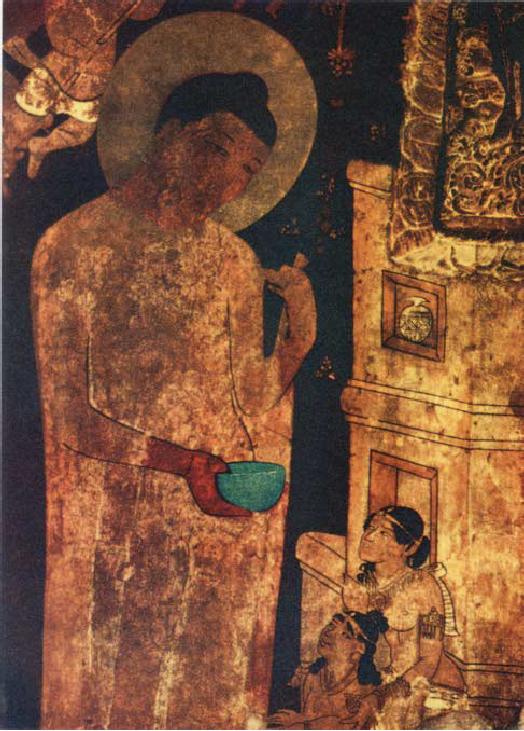
Continuity of Essential Spirit and Tradition
The one important and significant thing that emerges is the constant oneness and continuity of all Indian art in its essential spirit and tradition. Thus the earlier work at Ajanta has been found to be akin to the earlier sculptural work of the Buddhists, while the later paintings have a similar close kinship to the sculptural reliefs at Java. And we find that the spirit and tradition which reigns through all changes of style and manner at Ajanta, is present too at Bagh and Sigiriya, in the Khotan frescoes, in the illuminations of Buddhist manuscripts of a much later time and in spite of the change of form and manner is still spiritually the same in the Rajput paintings.
This unity and continuity enable us to distinguish and arrive at a clear understanding of what is the essential aim, inner turn and motive, spiritual method which differentiate Indian painting first from occidental work and then from the nearer and more kindred art of other countries of Asia.

Indian painting no more than Indian architecture and sculpture could escape from its absorbing motive, its transmuting atmosphere, the direct or subtle obsession of the mind that has been subtly and strangely changed, the eye that has been trained to see, not as others with only the external eye but by a constant communing of the mental parts and the inner vision with the self beyond mind and the spirit to which forms are only a transparent veil or a slight index of its own greater splendour.
Notes
- Since then more paintings of high quality have been found in some southern temples, akin in their spirit and style to the work at Ajanta. ↩︎
Continued in Part 2
~ Design: Beloo Mehra

